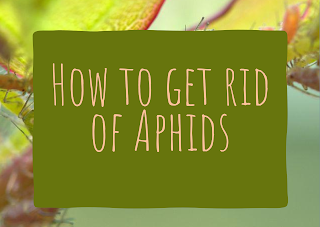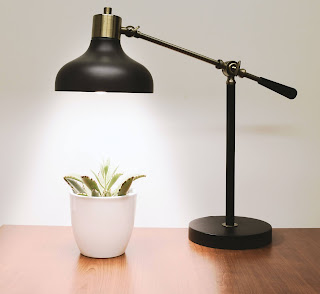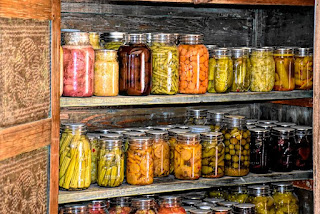How to Get Rid of Aphids
No one likes dealing with aphids. It's overwhelming and distressing to watch your plants struggling with infestation of these tiny insects. They can infest gardens of all types and the large populations of these insects can cause severe damage or kill plants in a short time. Therefore it's important to get rid of aphids as soon as you spot them in your plants.
Aphids are usually found underside of the leaves and on plant stems. The common signs of their infestation is curled or distorted leaves and honeydew on leaves. Additionally, these soft-bodied, sucking insects come in a variety of colors from black, white, green, yellow, and brown. This guide will show you a number of practices you can use to get rid of aphids.
Disclosure: This post contains affiliate links. We may receive commissions on purchases made from our chosen links with no extra cost to you. Learn more.
(i) Use Organic and Natural Insecticides
Whenever you notice there are aphids in your plants, you get to a point of desperation and you can even do anything in order to contain the situation. Both online and in some home and garden stores, there are plenty of insecticides and repellents you can find which are meant to kill aphids.
Unfortunately, most of those don't work as promised, not to mention that they're not safe. You may end up poisoning yourself or pets in your effort to get rid of aphids. Therefore, I advise you to choose products that can effectively deter aphids without any negative effect on you and your plants.
Best Organic Insecticides
Below are organic spray options that can be used to reduce aphid populations. These insecticides can be used on many different types of plants in greenhouses, indoors, outdoors, etc Not only do these products get rid of aphids, but they're also effective in controlling other pests such as spider mites, thrips, scale insects, mealybugs, whiteflies, and many more.
TIPS
Spray on top of the leaves as well as undersides where aphids are usually found.
Apply insecticides in the morning or evening when temperatures are cooler
Read product labels carefully and follow instructions
(ii) Employ Natural Predators
Not all insects are bad for your garden, there are some that can help you take care of aphids problem. Those should be encouraged in your garden. Some of the beneficial insects include ladybugs, green lacewing, and praying mantis. These insects do not only help to get rid of aphids, but they help to fight other insects pests.
Ladybugs and lacewings mainly feed on soft bodied and slow moving insects such as mealybugs, scales, thrips, moth eggs, and other pests. Then praying mantis has a voracious appetite for variety of insects including soft-bodied, ground dwelling and flying insects like crickets, locust, grasshoppers, etc
In short, beneficial insects can be used anywhere pests exist, whether in greenhouses or on trees. They are effective and can provide long-lasting, positive results. You can buy these insects online or in your local garden store.
(iii) Mechanical Practices
As we mentioned about using insecticides and biological control measures, mechanical methods should also be considered when aphids have reached an unacceptable level. Mechanical methods can be achieved by several means, two of which is pruning and hosing off those aphids.
Pruning
Other than improving the appearance and beauty of the plants, pruning can help to get rid of aphids. It is the best way to stop them from spreading. Prune curled and twisted leaves, and also check undersides of leaves where aphids usually hide. Moreover, prune when it's dry outside to avoid spreading diseases.
Be sure to clean your pruning tools with rubbing alcohol both before and after pruning in order to prevent the spread of diseases, rust, and maintain proper function. Also make sure to use good tools for the job. Your tools must be sharp so you don't end up damaging plants. Don't forget to wear gardening gloves, protective eyewear, long sleeve and long pants to protect yourself while pruning.
Hosing Off Aphids
Spray off the leaves of affected plants with a strong stream of water. This will dislodge aphids and other insect pests like mealybugs and whiteflies. In addition to this, you will also be rinsing away honeydew (sticky residue produced by aphids).
Repeat the process twice or thrice a day until you notice the aphids are gone. Don't forget to spray undersides of the leaves where aphids usually hide. This method is not recommended for plants that do not like too much water because excessive water might lead to rotting roots to those plants.
To Sum Up
Hopefully this post has given you great ideas to help your aphids problem without using harsh chemicals. These aforementioned control options are sure to keep your plants healthy.
Overall, make a habit of checking your plants regularly so that it can be easier to get rid of infestation if caught early. Look for aphids undersides of leaves where they are often found. You can use a 10X magnifying lens to help you see and identify them. If you find a developing aphid population, you can use one or combination of these methods.
FAQs
1.Are all aphids the same?
All aphids belong to the Aphididae family but at the same time, they are not the same. They're many species of aphids and some are even difficult to distinguish from one another. Common species are green, yellow, white, and black. Regardless of that, management of most aphid species is similar.
2. How do aphids affect the plant they feed on?
Aphids affect the plant by removing sap and plant nutrients. Low numbers of aphids doesn't cause much damage to plants. However a large infestation can weaken or kill the plant. Therefore you must get rid of them as soon as you spot them because they reproduce quickly.
3. Can you get sick from aphids?
The short answer is "no". Aphids are not harmful to humans. If you are sure the damage to your leafy greens were caused by aphids, they are safe to eat, as long as you rinse them before consuming.
RELATED:







What causes mites in hibuscus
ReplyDeleteThere are three things required for an outbreak. A susceptible host, a pest/pathogen, and conducive environmental conditions. So what causes mites in your hibiscus is the hibiscus not being mite resistant, some mites finding your hibiscus and starting an infestation, and good environmental conditions for the mites to live.
DeleteSeveral things can cause mites in hibiscus plants. One common cause is a lack of proper nutrition or water, which can weaken the plant and make it more susceptible to pests. Mites can also be introduced to the plant by contaminated soil or other plants, or they can be carried in by wind or insects. Mites can also be introduced to a hibiscus plant through the use of infected tools, such as pruning shears or spades.
DeleteDo you have mites in your hibiscus plant?